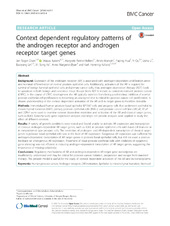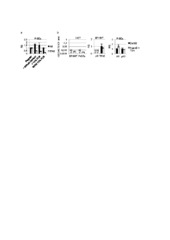| dc.contributor.author | Olsen, Jan R | en_US |
| dc.contributor.author | Azeem, Waqas | en_US |
| dc.contributor.author | Hellem, Margrete R | en_US |
| dc.contributor.author | Marvyin, Kristo | en_US |
| dc.contributor.author | Hua, Yaping | en_US |
| dc.contributor.author | Qu, Yi | en_US |
| dc.contributor.author | Li, Lisha | en_US |
| dc.contributor.author | Lin, Biaoyang | en_US |
| dc.contributor.author | Ke, XI- S | en_US |
| dc.contributor.author | Øyan, Anne Margrete | en_US |
| dc.contributor.author | Kalland, Karl-Henning | en_US |
| dc.date.accessioned | 2016-07-05T07:37:52Z | |
| dc.date.available | 2016-07-05T07:37:52Z | |
| dc.date.issued | 2016-07-04 | |
| dc.Published | BMC Cancer. 2016 Jul 04;16(1):377 | eng |
| dc.identifier.uri | https://hdl.handle.net/1956/12249 | |
| dc.description.abstract | Background Expression of the androgen receptor (AR) is associated with androgen-dependent proliferation arrest and terminal differentiation of normal prostate epithelial cells. Additionally, activation of the AR is required for survival of benign luminal epithelial cells and primary cancer cells, thus androgen deprivation therapy (ADT) leads to apoptosis in both benign and cancerous tissue. Escape from ADT is known as castration-resistant prostate cancer (CRPC). In the course of CRPC development the AR typically switches from being a cell-intrinsic inhibitor of normal prostate epithelial cell proliferation to becoming an oncogene that is critical for prostate cancer cell proliferation. A clearer understanding of the context dependent activation of the AR and its target genes is therefore desirable. Methods Immortalized human prostate basal epithelial EP156T cells and progeny cells that underwent epithelial to mesenchymal transition (EMT), primary prostate epithelial cells (PrECs) and prostate cancer cell lines LNCaP, VCaP and 22Rv1 were used to examine context dependent restriction and activation of the AR and classical target genes, such as KLK3. Genome-wide gene expression analyses and single cell protein analyses were applied to study the effect of different contexts. Results A variety of growth conditions were tested and found unable to activate AR expression and transcription of classical androgen-dependent AR target genes, such as KLK3, in prostate epithelial cells with basal cell features or in mesenchymal type prostate cells. The restriction of androgen- and AR-dependent transcription of classical target genes in prostate basal epithelial cells was at the level of AR expression. Exogenous AR expression was sufficient for androgen-dependent transcription of AR target genes in prostate basal epithelial cells, but did not exert a positive feedback on endogenous AR expression. Treatment of basal prostate epithelial cells with inhibitors of epigenetic gene silencing was not efficient in inducing androgen-dependent transcription of AR target genes, suggesting the importance of missing cofactor(s). Conclusions Regulatory mechanisms of AR and androgen-dependent AR target gene transcription are insufficiently understood and may be critical for prostate cancer initiation, progression and escape from standard therapy. The present model is useful for the study of context dependent activation of the AR and its transcriptome. | en_US |
| dc.language.iso | eng | eng |
| dc.publisher | BioMed Central | eng |
| dc.rights | Attribution CC BY 4.0 | eng |
| dc.rights.uri | http://creativecommons.org/licenses/by/4.0 | eng |
| dc.subject | Human prostate cancer | eng |
| dc.subject | Androgen receptor | eng |
| dc.subject | Differentiation | eng |
| dc.subject | Epithelial to mesenchymal transition | eng |
| dc.subject | Stem cell | eng |
| dc.title | Context dependent regulatory patterns of the androgen receptor and androgen receptor target genes | en_US |
| dc.type | Peer reviewed | |
| dc.type | Journal article | |
| dc.date.updated | 2016-07-04T16:03:05Z | |
| dc.description.version | publishedVersion | en_US |
| dc.rights.holder | Copyright The Author(s). 2016 | |
| dc.identifier.doi | https://doi.org/10.1186/s12885-016-2453-4 | |
| dc.subject.nsi | VDP::Medisinske Fag: 700 | en_US |


